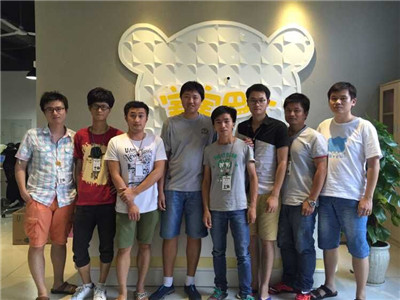1.OGNL概述
OGNL,全称为Object-Graph Navigation Language,它是一个功能强大的表达式语言,用来获取和设置Java对象的属性,它旨在提供一个更高的更抽象的层次来对Java对象图进行导航。
OGNL表达式的基本单位是"导航链",一般导航链由如下几个部分组成:
- 属性名称(property)
- 方法调用(method invoke)
- 数组元素
所有的OGNL表达式都基于当前对象的上下文来完成求值运算,链的前面部分的结果将作为后面求值的上下文。例如:names[0].length()。
2.OGNL操作属性
public class OGNL1 {
public static void main(String[] args) {
/** 创建一个Person对象 **/
Person person = new Person();
person.setName("zhangsan");
try {
/** 从person对象中获取name属性的值 **/
Object value = Ognl.getValue("name", person);
System.out.println(value);
} catch (OgnlException e) {
e.printStackTrace();
}
}
}
/** model 实体类 **/
class Person {
private String name;
public String getName() {
return name;
}
public void setName(String name) {
this.name = name;
}
}
3.OGNL访问context
public class OGNL1 {
public static void main(String[] args) {
/** 创建一个上下文Context对象,它是用保存多个对象一个环境 对象 **/
Map<String, Object> context = new HashMap<String, Object>();
Person person1 = new Person();
person1.setName("zhangsan");
Person person2 = new Person();
person2.setName("lisi");
Person person3 = new Person();
person3.setName("wangwu");
/* person4不放入到上下文环境中 */
Person person4 = new Person();
person4.setName("zhaoliu");
/** 将person1、person2、person3添加到环境中(上下文中) **/
context.put("person1", person1);
context.put("person2", person2);
context.put("person3", person3);
try {
/** 获取根对象的"name"属性值 **/
/** 从根对象person2,直接从person2中查找**/
Object value = Ognl.getValue("name", context, person2);
System.out.println("ognl expression "name" evaluation is : " + value);
/** 获取根对象的"name"属性值 **/
/** 指定#person2,直接从person1中查找**/
Object value2 = Ognl.getValue("#person2.name", context, person2);
System.out.println("ognl expression "#person2.name" evaluation is : "+ value2);
/** 获取person1对象的"name"属性值 **/
/** 指定#person1,直接从person1中查找**/
Object value3 = Ognl.getValue("#person1.name", context, person2);
System.out.println("ognl expression "#person1.name" evaluation is : "+ value3);
/** 将person4指定为root对象,获取person4对象的"name"属性,注意person4对象不在上下文中 **/
/** 从根对象person4中查找,找到 **/
Object value4 = Ognl.getValue("name", context, person4);
System.out.println("ognl expression "name" evaluation is : "+ value4);
/** 将person4指定为root对象,获取person4对象的"name"属性,注意person4对象不在上下文中 **/
/** 不存在上下文中,找不到,报错 **/
Object value5 = Ognl.getValue("#person4.name", context, person4);
System.out.println("ognl expression "person4.name" evaluation is : "+ value5);
} catch (OgnlException e) {
e.printStackTrace();
}
}
}
4.OGNL调用方法
public class OGNL2 {
public static void main(String[] args) { /* OGNL提供的一个上下文类,它实现了Map接口 */
OgnlContext context = new OgnlContext();
People people1 = new People();
people1.setName("zhangsan");
People people2 = new People();
people2.setName("lisi");
People people3 = new People();
people3.setName("wangwu");
context.put("people1", people1);
context.put("people2", people2);
context.put("people3", people3);
context.setRoot(people1);
try {
/** 调用 成员方法 **/
Object value = Ognl.getValue("name.length()", context, context.getRoot());
System.out.println("people1 name length is :" + value);
Object upperCase = Ognl.getValue("#people2.name.toUpperCase()", context, context.getRoot());
System.out.println("people2 name upperCase is :" + upperCase);
Object invokeWithArgs = Ognl.getValue("name.charAt(5)", context, context.getRoot());
System.out.println("people1 name.charAt(5) is :" + invokeWithArgs);
/** 调用静态方法 **/
Object min = Ognl.getValue("@java.lang.Math@min(4,10)", context, context.getRoot());
System.out.println("min(4,10) is :" + min);
/** 调用静态变量 **/
Object e = Ognl.getValue("@java.lang.Math@E", context, context.getRoot());
System.out.println("E is :" + e);
} catch (OgnlException e) {
e.printStackTrace();
}
}
}
5.OGNL操作集合
public class OGNL3 {
public static void main(String[] args) throws Exception {
OgnlContext context = new OgnlContext();
Classroom classroom = new Classroom();
classroom.getStudents().add("zhangsan");
classroom.getStudents().add("lisi");
classroom.getStudents().add("wangwu");
classroom.getStudents().add("zhaoliu");
classroom.getStudents().add("qianqi");
Student student = new Student();
student.getContactWays().put("homeNumber", "110");
student.getContactWays().put("companyNumber", "119");
student.getContactWays().put("mobilePhone", "112");
context.put("classroom", classroom);
context.put("student", student);
context.setRoot(classroom); /* 获得classroom的students集合 */
Object collection = Ognl.getValue("students", context,context.getRoot());
System.out.println("students collection is :" + collection); /* 获得classroom的students集合 */
Object firstStudent = Ognl.getValue("students[0]", context,context.getRoot());
System.out.println("first student is : " + firstStudent); /* 调用集合的方法 */
Object size = Ognl.getValue("students.size()", context,context.getRoot());
System.out.println("students collection size is :" + size);
System.out.println("--------------------------飘逸的分割线--------------------------");
Object mapCollection = Ognl.getValue("#student.contactWays", context,context.getRoot());
System.out.println("mapCollection is :" + mapCollection);"#student.contactWays['homeNumber']", context, context.getRoot());
System.out.println("the first element of contactWays is :" + firstElement);
System.out.println("--------------------------飘逸的分割线--------------------------"); /* 创建集合 */
Object createCollection = Ognl.getValue("{'aa','bb','cc','dd'}", context, context.getRoot());
System.out.println(createCollection); /* 创建Map集合 */
Object createMapCollection = Ognl.getValue("#{'key1':'value1','key2':'value2'}", context, context.getRoot());
System.out.println(createMapCollection);
}
}
class Classroom {
private List<String> students = new ArrayList<String>();
public List<String> getStudents() {
return students;
}
public void setStudents(List<String> students) {
this.students = students;
}
}
class Student {
private Map<String, Object> contactWays = new HashMap<String, Object>();
public Map<String, Object> getContactWays() {
return contactWays;
}
public void setContactWays(Map<String, Object> contactWays) {
this.contactWays = contactWays;
}
}
6.OGNL过滤集合
public class OGNL4 {
public static void main(String[] args) throws Exception {
OgnlContext context = new OgnlContext();
Humen humen = new Humen();
humen.setName("qiuyi");
humen.setSex("n");
humen.setAge(22);
humen.getFriends().add(new Humen("zhangsan", "n", 22));
humen.getFriends().add(new Humen("lisi", "f", 21));
humen.getFriends().add(new Humen("wangwu", "n", 23));
humen.getFriends().add(new Humen("zhaoliu", "n", 22));
humen.getFriends().add(new Humen("qianqi", "n", 22));
humen.getFriends().add(new Humen("sunba", "f", 20));
humen.getFriends().add(new Humen("yangqiu", "f", 25));
context.put("humen", humen);
context.setRoot(humen);
/** OGNL过滤集合的语法为:collection.{? expression} **/
Object filterCollection = Ognl.getValue("friends.{? #this.name.length() > 7}", context, context.getRoot());
System.out.println("filterCollection is :" + filterCollection);
System.out.println("--------------------------飘逸的分割线--------------------------");
/** OGNL投影集合的语法为:collection.{expression} **/
Object projectionCollection = Ognl.getValue("friends.{name}", context, context.getRoot());
System.out.println("projectionCollection is :" + projectionCollection);
}
}
class Humen {
private String name;
private String sex;
private int age;
private List<Humen> friends = new ArrayList<Humen>();
public Humen() {
}
public Humen(String name, String sex, int age) {
this.name = name;
this.sex = sex;
this.age = age;
}
public String getName() {
return name;
}
public void setName(String name) {
this.name = name;
}
public String getSex() {
return sex;
}
public void setSex(String sex) {
this.sex = sex;
}
public int getAge() {
return age;
}
public void setAge(int age) {
this.age = age;
}
public List<Humen> getFriends() {
return friends;
}
public void setFriends(List<Humen> friends) {
this.friends = friends;
}
@Override
public String toString() {
return "Humen [name=" + name + ", sex=" + sex + ", age=" + age + "]";
}
}

本站文章为 宝宝巴士 SD.Team 原创,转载务必在明显处注明:(作者官方网站: 宝宝巴士 )
转载自【宝宝巴士SuperDo团队】原文链接: http://www.cnblogs.com/superdo/p/5080281.html